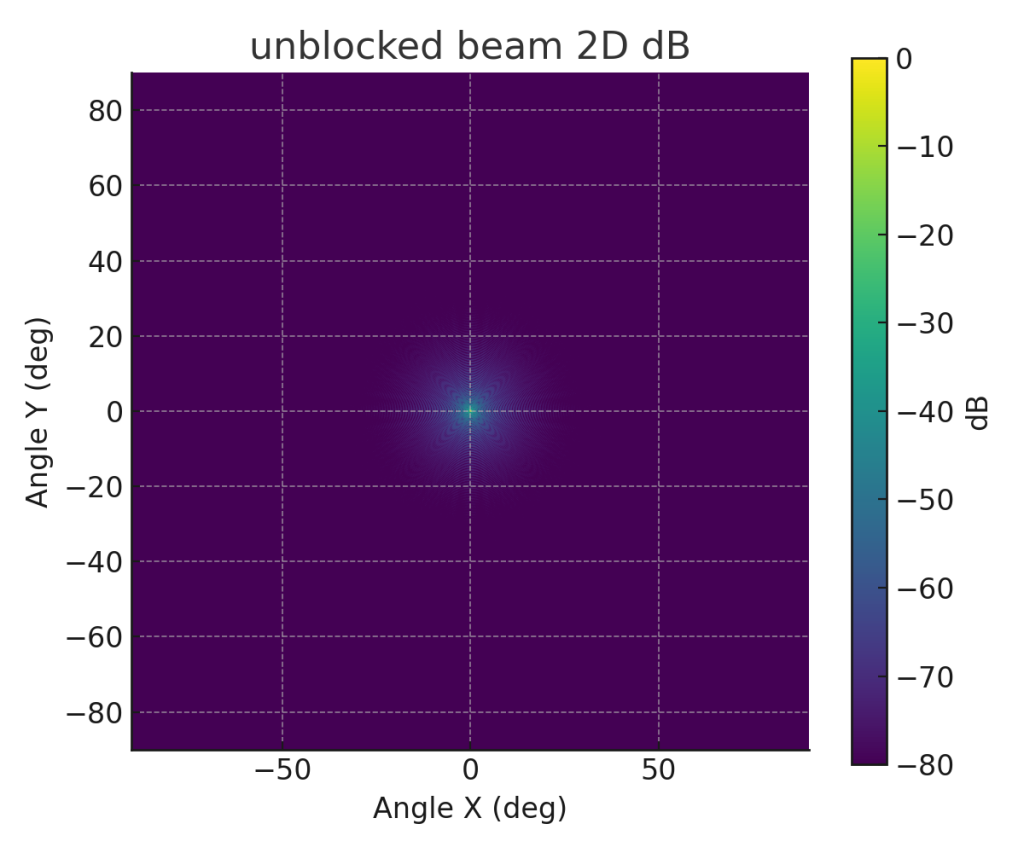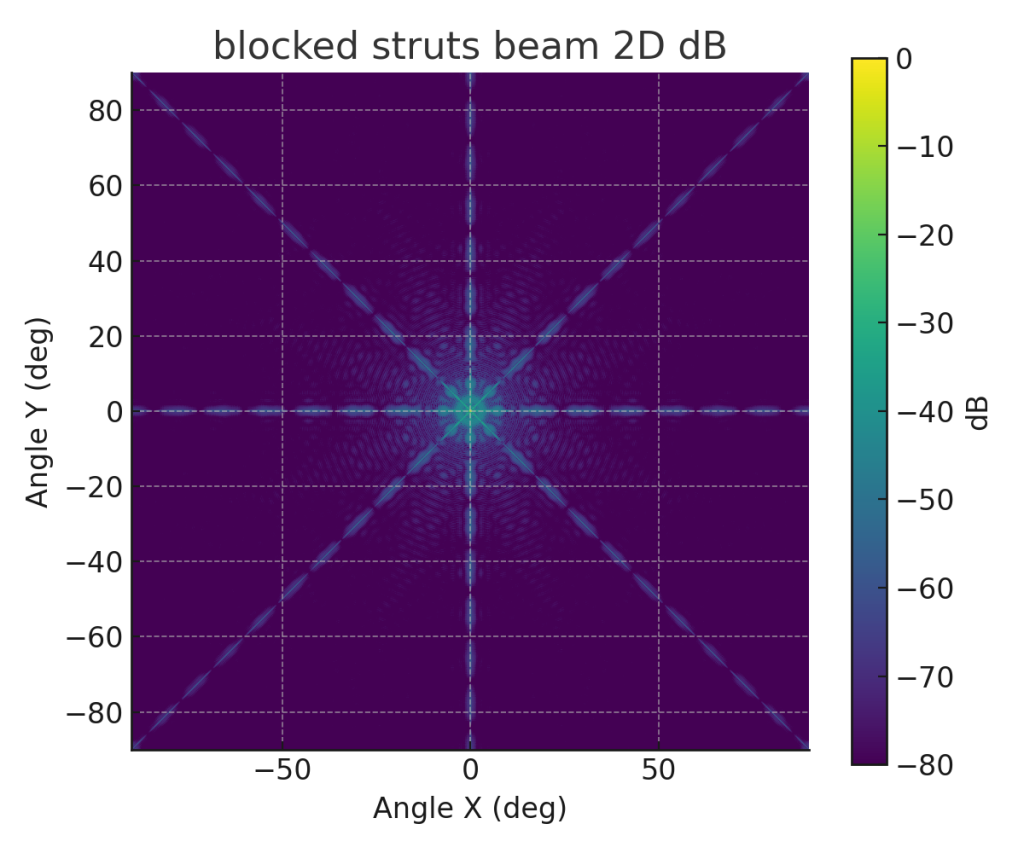Effect of blockage prime focus waveguide and supports on radio dish – diagrams and beam cuts
Modelling a 3 m dish at 1420.405 MHz in two ways:
- an offset-like, unblocked circular aperture with −12 dB edge taper, and
- a prime-focus dish with 12% central blockage plus four support struts (2% of D wide at 0°, 90°, 45°, 135°).
You’ll see:
- The 1D azimuth cut compares sidelobes and main-beam width. The dashed lines mark the approximate HPBW from 1.02 λ/D1.02\,\lambda/D (≈ 4.1° total width for 3 m at 1420 MHz).
- The 2D maps show the classic diffraction “spikes” from struts and the elevated concentric sidelobes from central blockage.
Diagrams:
• Unblocked beam 2D:

• Prime-focus (blocked+struts) beam 2D:

• Beam cuts for 3m dish (this is CSV file):
https://www.astronomy.me.uk/wp-content/uploads/2025/09/beam_cuts_3m_1420MHz.csv
Quick read of the plots:
- Main lobe: essentially the same width (physics is set by λ/D), but the blocked case nudges a touch more power into sidelobes.
- Sidelobes: the prime-focus model raises near sidelobes by several dB and creates linear spike features along the strut angles — exactly the artifacts you asked about.
- Practical impact: for continuum H-line work, dynamic range and baseline fitting are more sensitive to these elevated sidelobes/spikes; offset dishes avoid them by design.